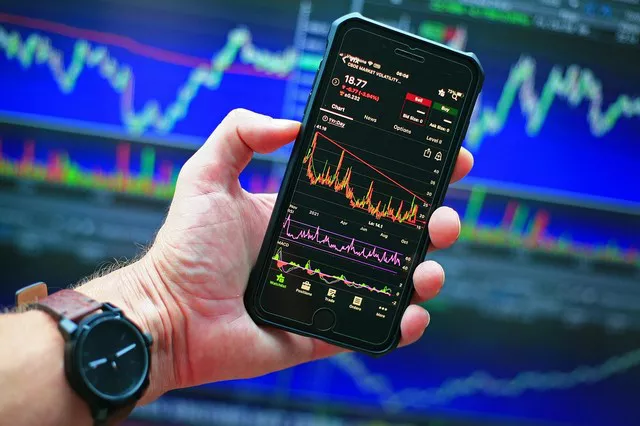Futures markets play a pivotal role in the global economy, influencing everything from commodities and currencies to stock indices and interest rates. When futures prices rise, it can have significant implications for various stakeholders, including investors, businesses, and the broader financial landscape. This article explores the dynamics of rising futures prices, their causes, effects on different markets, and strategies for investors navigating this environment.
Introduction to Futures Markets
Futures contracts are financial instruments that obligate buyers and sellers to transact a specific asset at a predetermined price and date in the future. They serve as essential tools for hedging, speculation, and price discovery across diverse sectors, including agriculture, energy, finance, and more recently, cryptocurrencies.
Causes of Rising Futures Prices
Several factors contribute to an increase in futures prices:
1. Supply and Demand Dynamics:
Demand-Side Factors: Increased demand for a commodity or asset can drive futures prices higher. Factors such as economic growth, geopolitical tensions, and weather patterns affecting agricultural output can amplify demand.
Supply-Side Factors: Reduced supply due to natural disasters, political instability, or production cuts can constrain availability, pushing prices upwards.
2. Market Sentiment and Speculation:
Investor Sentiment: Positive market sentiment or bullish expectations about future economic conditions can drive speculative buying, thereby raising futures prices.
Speculative Activity: Traders and investors may anticipate future price movements and take positions based on their expectations, influencing short-term price volatility.
3. Macroeconomic Indicators:
Interest Rates: Changes in interest rates set by central banks can affect futures prices, particularly in interest rate futures where expectations of rate hikes or cuts impact pricing.
Inflation Expectations: Rising inflation expectations may lead to increased demand for inflation-hedging assets, such as commodities, driving their futures prices higher.
Impact on Financial Markets
When futures prices rise, the effects ripple through various financial markets:
1. Equity Markets:
Sector-Specific Impact: Companies sensitive to commodity prices (e.g., energy, materials) may see their stock prices rise, reflecting higher expected profitability.
Overall Market Sentiment: Rising futures prices can bolster investor confidence, potentially lifting broader equity indices.
2. Commodity Markets:
Price Transmission: Higher futures prices often translate into higher spot prices for commodities, impacting consumer goods prices and inflationary pressures.
Investment Flows: Institutional and retail investors may increase allocations to commodities as a hedge against inflation or to capitalize on price appreciation.
3. Currency Markets:
Exchange Rates: Commodity-producing countries’ currencies can strengthen when futures prices rise, driven by increased export revenues and economic growth prospects.
Risk Appetite: Higher futures prices may influence currency traders’ risk appetite, affecting exchange rate volatility and trading volumes.
4. Interest Rate Markets:
Yield Curve: Changes in interest rate futures prices reflect market expectations of future interest rate movements, influencing bond yields and borrowing costs.
See Also: Which is Better for Beginners: Futures or Options?
Strategies for Investors
Navigating a market environment with rising futures prices requires strategic considerations:
1. Hedging Strategies:
Using Futures Contracts: Hedging against price volatility by taking offsetting positions in futures contracts to mitigate risk exposure.
Options Strategies: Employing options on futures for downside protection or leveraging potential upside gains while limiting risk.
2. Speculative Opportunities:
Trend Following: Capitalizing on momentum by entering long positions as futures prices rise, with appropriate risk management measures.
Event-driven Strategies: Trading based on anticipated market reactions to specific events influencing futures prices, such as supply disruptions or policy announcements.
3. Diversification:
Asset Allocation: Balancing portfolios across different asset classes (equities, bonds, commodities) to mitigate risks associated with rising futures prices.
Global Exposure: Considering international futures markets to diversify geographic and currency risks, tapping into emerging opportunities.
4. Monitoring Economic Indicators:
Data Analysis: Keeping abreast of economic reports, central bank statements, and geopolitical developments to anticipate shifts in futures prices and adjust strategies accordingly.
Technical Analysis: Utilizing technical indicators and chart patterns to identify entry and exit points in futures trading, enhancing decision-making processes.
Conclusion
Rising futures prices reflect dynamic interactions among supply, demand, investor sentiment, and macroeconomic factors across global markets. Understanding these dynamics empowers investors to make informed decisions, whether hedging against risks, capitalizing on speculative opportunities, or adjusting portfolio allocations. By monitoring market trends, employing strategic approaches, and maintaining a diversified investment strategy, investors can navigate the complexities of rising futures prices effectively and enhance their financial outcomes in an evolving economic landscape.


